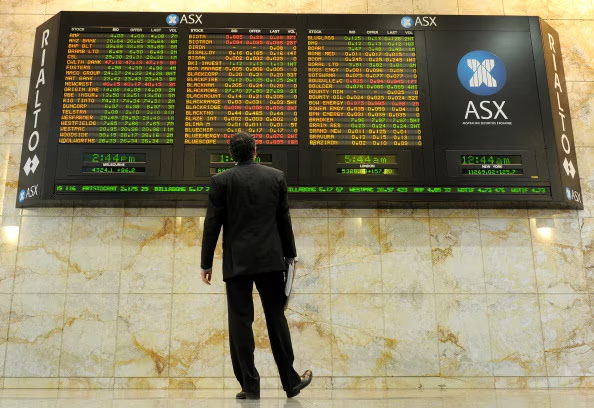The ASX 200 is the most widely used index of the Australian Securities Exchange (ASX) and more commonly referred to as simply the ASX 200. Comprised of the largest 200 hundred public companies by market capitalisation, the ASX 200 serves as a benchmark for the Australian market, comparable to the FTSE 100 in the UK, and Dow Jones or the S&P 500 in the US.
- CFD Knowledge Hub
- CFD asset classes
- What is the ASX 200?
What is the ASX 200?

- 1.The ASX 200
- 2.What makes up the ASX 200?
- 3.The top 10 companies
- 4.Why is the ASX 200 important?
- 5.How to invest in the ASX 200?
- 6.Other Australian indices
- 7.Why the ASX 200 belongs on your watchlist?

The ASX 200
Of the 2000+ companies listed in the ASX, the ASX 200 index tracks the movements of the top 200 companies by market capitalisation – that is the market value of the company’s outstanding shares. With the top 200 companies accounting for slightly more than 80% of the entire Australian share market capital, it is often seen as an indicator of the Australian equities market, and is one reason why the ASX 200 is the most closely watched Australian index.
The composition of the index is evaluated every quarter, with companies promoted or demoted according to movements in their share price over the past six months or other eligibility criteria such as the liquidity of shares on issue.
What makes up the ASX 200?
While the ASX 200 covers 10 sectors, including telecommunication, healthcare and industrials, it is dominated by financial and resources stocks, which account for more than half its value. The financials category alone, which includes the four major banks, makes up close to 30 per cent of the index.
The index is also dominated by a handful of large companies – the 10 largest make up more than 40 percent of the index. The Commonwealth Bank is one of the largest companies listed, weighted at more than 7% of the whole as of January 2020. The dominance of this small group of companies and the concentration of value in a couple of sectors is something investors should be aware of when using the ASX 200 as a benchmark as a movement in banking stocks, for instance, can have a significant impact on the overall index.
The top 10 companies
Commonwealth Bank
BHP Group Limited
CSL Limited
Westpac Banking Corp
National Aust. Bank
ANZ Banking Group
Telstra Corporation
Woolworths Group Limited
Wesfarmers Limited
Macquarie Group Limited
Why is the ASX 200 important?
The companies that make up the ASX 200 account for around 80 percent of Australia’s $A2 trillion share market. This means the ASX 200 serves as a useful proxy for the Australian market and can be taken as a decent indicator of the national economy. It is also used as a benchmark for investors and funds to compare performance.
How to invest in the ASX 200?
While the main purpose of the ASX 200 is to serve as an indicator of the Australian market, it is also a handy starting point for investors looking for exposure to large-cap Australian stocks. This can be done by investing in some of the individual component companies, or via one of the following options:
Exchange-traded funds
An investor can also invest in an exchange-traded fund (ETF), which tracks the ASX 200 as a whole and is traded like a common stock. Before buying into an ETF, investors should consider the ASX 200 sector makeup, as movements in the financial or material sectors, for example, may have significant impacts on the value of the ETF.
Futures contracts
A standard futures contract is a common way people can trade the ASX 200. This is where you agree to exchange a quantity of the index with another party at a predetermined future date and price.
CFDs
Contracts for Difference, or CFDs, are similar to Futures Contracts in that both allow for significant financial leverage, meaning investors borrow most of the money involved in the trade. Unlike Futures, however, a CFD has no set future price or date. Instead, they are a contract to pay or receive the difference in price between when the trader starts the contract and when they decide to finish it. CMC offers CFDs across a range of indices, including the ASX 200, and multiple instruments.
Other Australian indices
Accumulation Index
One thing worth noting is that the ASX 200 is a measure of a price change, which is ideal for speculators – those who are essentially betting whether a price will go up or down in the hopes of making a short-term return – but it doesn’t give investors all the information they need about total returns. For that, they need to look at the S&P/ASX20 Accumulation Index, which includes the impact of dividends.
All Ordinarie
The All Ordinaries Index is Australia's other key market indicator. The index represents the 500 largest companies listed on the ASX. It differs from the ASX 200 in that liquidity is not a factor in eligibility and market cap is the only thing considered for companies to be listed, with the exception of foreign domiciled companies.
Others
ASX 20 Index is comprised of the 20 largest stocks by market cap under the same under the same liquidity guidelines as the ASX 200. It is the narrowest index of the Australian index family.
ASX 300 Index provides additional depth and coverage to the ASX 200 whilst maintaining liquidity guidelines.
ASX Emerging Companies Index represents the performance of companies ranked outside the ASX 300.
Why the ASX 200 belongs on your watchlist?
Tracking the performance of Australia's largest companies, the ASX 200 serves as key indicator of the overall market. Due to the strict liquidity guidelines of the index, it is particularly relevant for institutional investors and those looking to make more stable investments.